This was published 5 years ago
Alsace, France: Maginot, the greatest defensive line never used
By Keith Austin
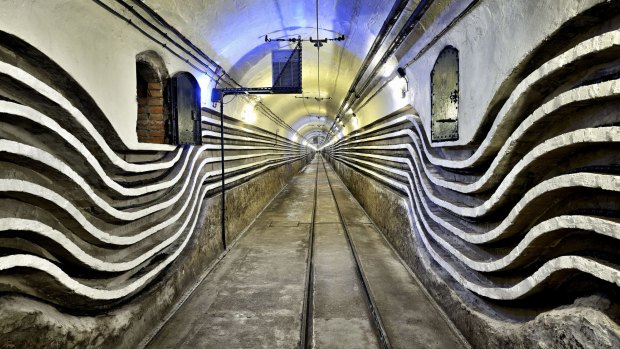
A gallery beneath Schoenenbourg fortress, part of the Maginot Line.Credit: Alamy
Pity the poor Nazi who dared to approach the Four-a-Chaux World War II fortress at Lembach in Alsace. Next to the steel front entrance there are a couple of neat little holes through which welcoming, hello-Hitler hand grenades can be popped. Past this, there's a narrow, arrow-straight corridor that ends in a medieval-looking slit for a machine gun. Then it's a sharp left-hand turn into another corridor and another machine gun opening.
Beyond that? Another steel door set in metres-thick concrete. It's a well-thought-out 20-metre killing field and it proved completely useless. Welcome to the Maginot Line, one of the biggest military flops of all time.
Not usually one to tour old battlefields or wartime sites, it's hard to resist the opportunity to visit such an iconic symbol of interwar European paranoia. The alternative is a tour along the Alsace Route des Vins, stopping in impossibly handsome villages and quaffing impeccably fine wines. Which means the Maginot Line had better be bloody good.
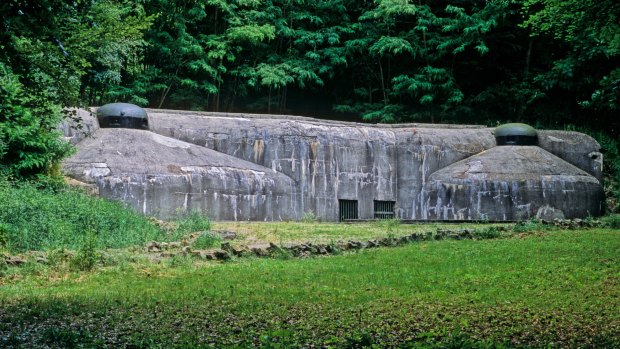
The Maginot Line in Alsace, France.Credit: Alamy
After lunch in Strasbourg on the Avalon Imagery II, we set off in a coach and plunge through the eastern edge of the Parc Naturel Régional des Vosges du Nord. Here, we dip in and out of patches of bosky shadow and dappled light until we pull up in a gravel drive outside what looks like the entrance to an underground car park, were it not for the tank left nonchalantly nearby.
Here we are met by Walter, a genial local guide who takes us up a slow incline to the left, past several WWII guns and up to the aforementioned steel door.
The Maginot Line stretched along the old Franco-German border from Switzerland in the south to Belgium in the north. It was 720 kilometres long and constructed in the 1930s on the orders of French War Minister Andre Maginot as a bulwark against future German aggression.
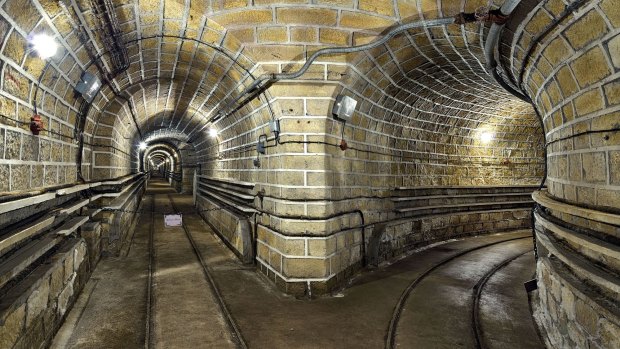
Galleries crossing in Galgenberg fortress, Maginot Line.Credit: Alamy
It consisted of concrete fortifications, tank obstacles, machine gun posts, artillery guns and other defenses. There were 45 main forts, 97 smaller forts and various other deadly bits and bobs dropped in between.
This section just south of the village of Lembach is one of the bigger installations. Just 10 kilometres from the German border it was built into a limestone hill and manned by 580 troops. There are five kilometres of underground galleries, some going down as deep as 30 metres, scattered over 26 hectares.
Fighting our way past hand-grenades and machine gun nests we enter the fortress through killing corridors which never saw a shot fired in anger nor a drop of blood spilled (unless someone cut their finger during construction).
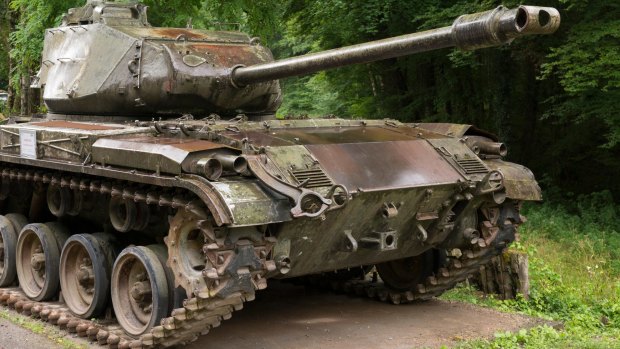
An American M41 Walker Bulldog at the Four-a-Chaux site of the Maginot Line at Lembach, Alsace.Credit: Alamy
As we follow him deep into the interior of the hill, Walter explains that the German Army simply bypassed the whole kit and caboodle (or simply flew over it) and entered France to the north through Belgium. The blitzkrieg, as it was known, saw the German army in Paris before they knew it and the Maginot Line and the men in it surrounded. In a way, given the German reluctance to attack the line head on, it worked all too well.
We visit the sleeping quarters, the "luxury" showers (one per 100 men), the first aid facilities, the clever escape shafts, the power plant and see how the ventilation system worked (an important consideration with 580 cheese-eating, wine-swilling Frenchmen down there). Yes, wine; there was a wine cellar because … French. The men, says Walter, were entitled to half a litre a day.
We follow the long underground galleries as they tunnel into the earth, each one still with the tracks that small trains ran on to move the men and munitions around.
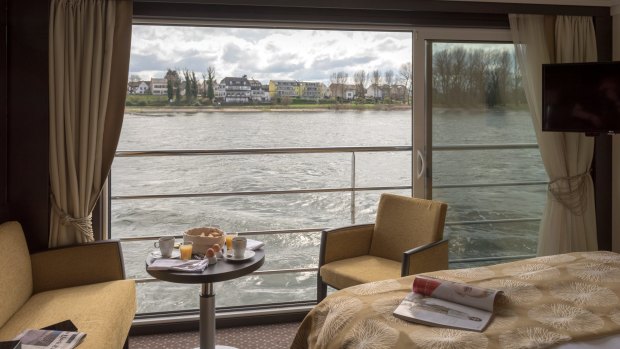
Panorama Suite aboard Avalon Waterways' Imagery II.
And it's the munitions sections which prove to be the most fascinating. Here, there are pulley systems to enable the men to haul the large shells around more easily and up into the tall silos which house the big artillery guns.
At various points above ground there are what look like big grey metal plugs set in the countryside with expansive views. These are the uppermost domes of the silos and which, as Walter demonstrates, were raised and lowered manually from below.
All in all we spend 90 absorbing minutes underground and emerge much as those French soldiers must have, blinking in the sunlight and desperate for a vin or three.
Cathay Pacific Airways flies from all the major Australian cities to Zurich via Hong Kong. See cathaypacific.com
CRUISE
Avalon Waterways' Romantic Rhine cruise from Basel to Amsterdam runs between April and November, in both northbound and southbound directions. From $3705 per person double occupancy. Price includes all meals, daily excursions and beer and wine at lunch and dinner. See avalonwaterways.com.au
Sign up for the Traveller Deals newsletter
Get exclusive travel deals delivered straight to your inbox. Sign up now.